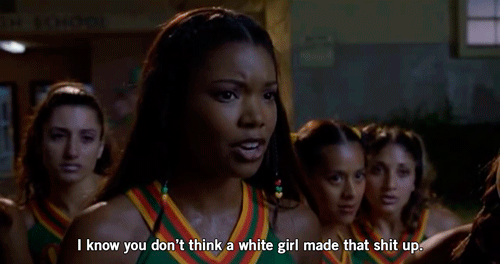Let’s face it: The conversation about diversity in journalism is mostly boring hand-wringing. With each new byline count, it’s easy to despair that gender and ethnic diversity is mostly a pipe dream–a goal that applies more to HR handbooks than actual newsroom practices.

But earlier this month, after MSNBC announced it was giving Chris Hayes his own daily primetime news show, Media Matters published a chart that showed how his weekend show, Up with Chris Hayes, differed from its cable-news competitors: It wasn’t all white dudes. Specifically, 57 percent of the show’s guests were not white men. (Full disclosure: I have, in the past, been one of the non-dudes featured on said program.) To hear lots of journalists tell it, this is an impossible feat. So I called up Hayes to ask how he and his team created a shining oasis of diversity in a cable-news desert of sameness.
“We just would look at the board and say, ‘We already have too many white men. We can’t have more.’ Really, that was it,” Hayes says. “Always, constantly just counting. Monitoring the diversity of the guests along gender lines, and along race and ethnicity lines.” Out of four panelists on every show, he and his booking producers ensured that at least two were women. “A general rule is if there are four people sitting at table, only two of them can be white men,” he says. “Often it would be less than that.”
If they did end up booking a show that featured a majority of white men, they’d call it “taking a gender hit.” Hayes explains, “and then we’d be like, well, we have to make up for that either in the second half of the show or on the Sunday show.”
In other words: quotas. Hard quotas.
“The editorial decisions, the content we decided to pursue, also dovetailed with that,” he continues. “We had three Iraqis join us when we talked about the 10-year anniversary of the war. We did a full show about feminism. And so, part of it is that we weren’t talking about the Ryan budget every week. Often we were discussing topics on which there was a natural affinity between people of backgrounds different than the standard one that is often presented on television.”

But sometimes national politics is the hottest topic, and some argue that media can’t be held to a diversity standard when women and people of color are so drastically underrepresented in relevant spokesperson and leadership positions. Hayes acknowledges that, for shows like Meet the Press, there’s probably something to that excuse. But most news outlets aren’t only talking to senators and CEOs. There’s a wide range of perspectives that can be brought to bear on any number of political issues. And, without a quota, it’s easy to default to the same handful of big names.
“You have to say, ‘We give ourselves this rule,’ and that’s going to force us to just be more resourceful,” Hayes says. “Because I genuinely don’t think there’s another way to do it. If you don’t do that then the inertia and the tide are so strong, unless you are committed as a priority to actively fight against it, you’re going to end up reproducing what everyone else does.”
As he makes the transition to primetime, he plans to keep a quota system. “It’s going to be even harder to do at a daily level than it was at two shows a week,” he says. “But we’re a thousand percent committed to it.” After all, it’s part of what made his weekend show so successful. Hayes has heard from the audience that they appreciate the fresh faces and perspectives that this rule has forced him to cultivate.
“You talk to people that not everyone else talks to, have people writing for you who aren’t writing for everyone else,” he says. “I think it was a big part of the show’s success. It wasn’t just a kind of dutiful exercise in diversity. It created tangible editorial rewards.”
Ann Friedman is a magazine editor who loves the internet. She lives in Los Angeles
